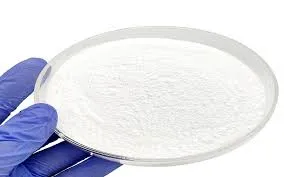The Promise of Biodegradable Additives in Plastic Solutions
In recent years, the increasing concerns over plastic pollution have highlighted the urgent need for sustainable alternatives to conventional plastic materials. One promising avenue in addressing this environmental crisis is the development of biodegradable additives. These innovative substances can transform traditional plastics into more eco-friendly alternatives, paving the way for a cleaner, greener future.
Biodegradable additives are materials added to conventional plastics that enhance their ability to break down in natural environments. Unlike traditional plastics, which can take hundreds of years to decompose, biodegradable plastics can break down within a few months to a couple of years, depending on environmental conditions such as temperature, humidity, and microbial activity. This significant difference is crucial for reducing the long-lasting impact of plastic waste on our planet.
One of the key benefits of biodegradable additives is their potential to reduce the volume of waste in landfills and oceans. With millions of tons of plastic waste generated annually, integrating biodegradable additives into plastic products can help mitigate the accumulation of non-decomposable waste. For example, products like shopping bags, food containers, and packaging materials treated with biodegradable additives can degrade more efficiently, thus minimizing their environmental footprint.
There are several types of biodegradable additives available, and they often fall into two categories oxo-biodegradable and hydro-biodegradable. Oxo-biodegradable additives typically contain metal salts that promote the oxidation of plastic, leading to its fragmentation. This process can happen before or after the plastic is discarded. Hydro-biodegradable additives, on the other hand, rely on moisture to facilitate the breakdown of plastic into organic matter. These additives are particularly suitable for products that are likely to be composted or exposed to higher humidity levels.
biodegradable additive

Despite the promising benefits, the introduction of biodegradable additives is not without challenges. One major concern is the compatibility of these additives with existing recycling streams. For instance, if biodegradable plastics are mixed with traditional plastics, they can contaminate the recycling process, rendering the materials unusable. Educating consumers and implementing effective waste management systems are critical to ensure that biodegradable materials are disposed of properly, thus maximizing their environmental benefits.
Furthermore, the effectiveness of biodegradable additives can vary dramatically. Factors such as the type of plastic, the composition of the additive, and environmental conditions all play a role in determining how quickly and efficiently the plastic will biodegrade. To address this, ongoing research and development are essential to optimize biodegradable formulations and ensure consistent performance across various applications.
On a regulatory front, governments around the world are beginning to recognize the importance of biodegradable materials in plastic waste reduction strategies. Initiatives and legislation aimed at reducing single-use plastics and promoting biodegradable alternatives are increasingly being implemented. This creates an opportunity for the market to grow, driving innovation in sustainable materials and reducing reliance on traditional plastics.
In conclusion, biodegradable additives represent a significant step forward in the quest to address plastic pollution. By enhancing the degradability of conventional plastics, these additives can play a crucial role in reducing waste and minimizing environmental harm. However, to fully harness their potential, collaboration among manufacturers, consumers, and policymakers is necessary. Only through collective efforts can we turn the tide against plastic pollution and work towards a sustainable future. As the world continues to grapple with the challenges of plastic waste, biodegradable additives offer a glimmer of hope in creating a cleaner, healthier planet for generations to come.

